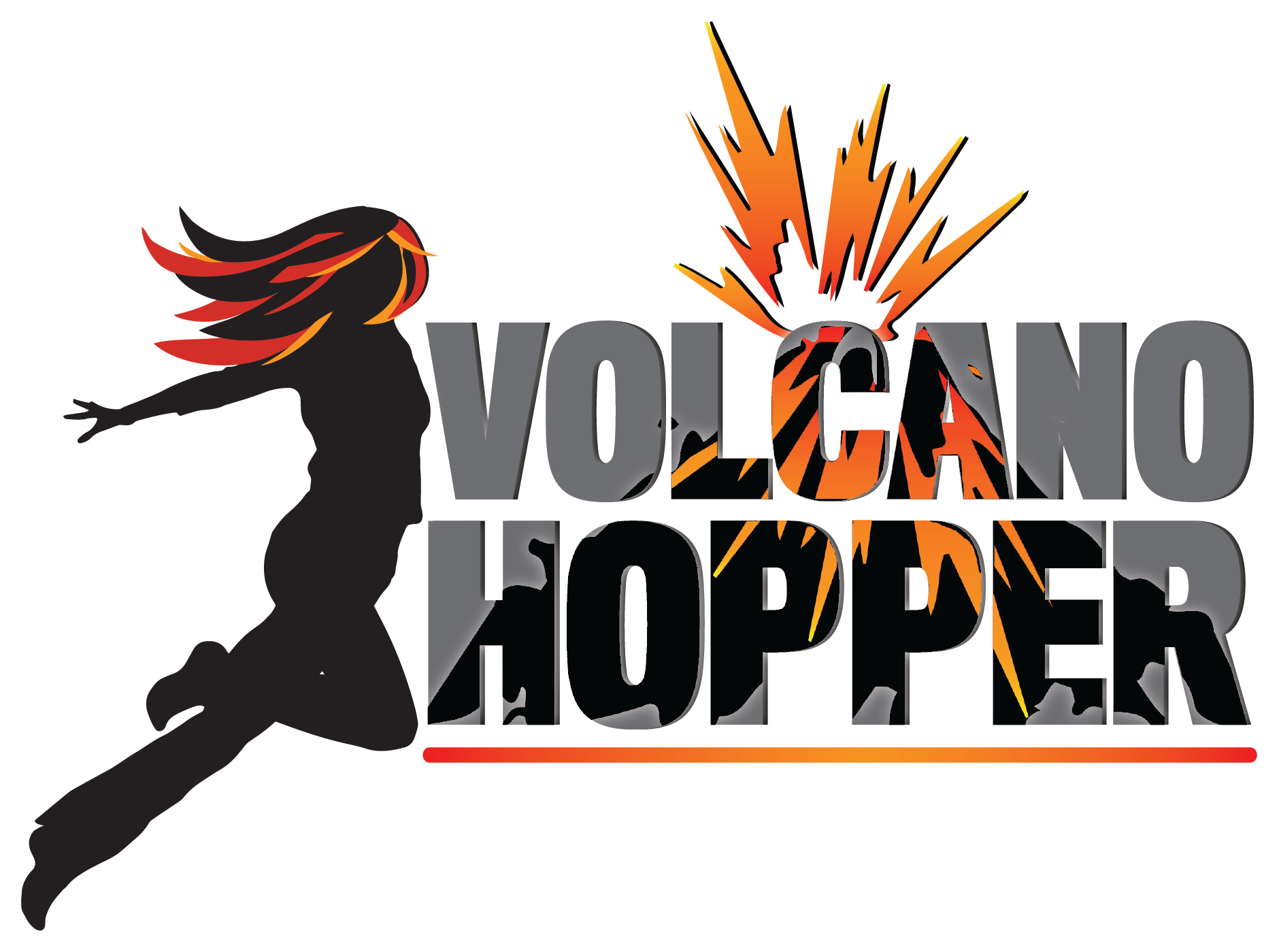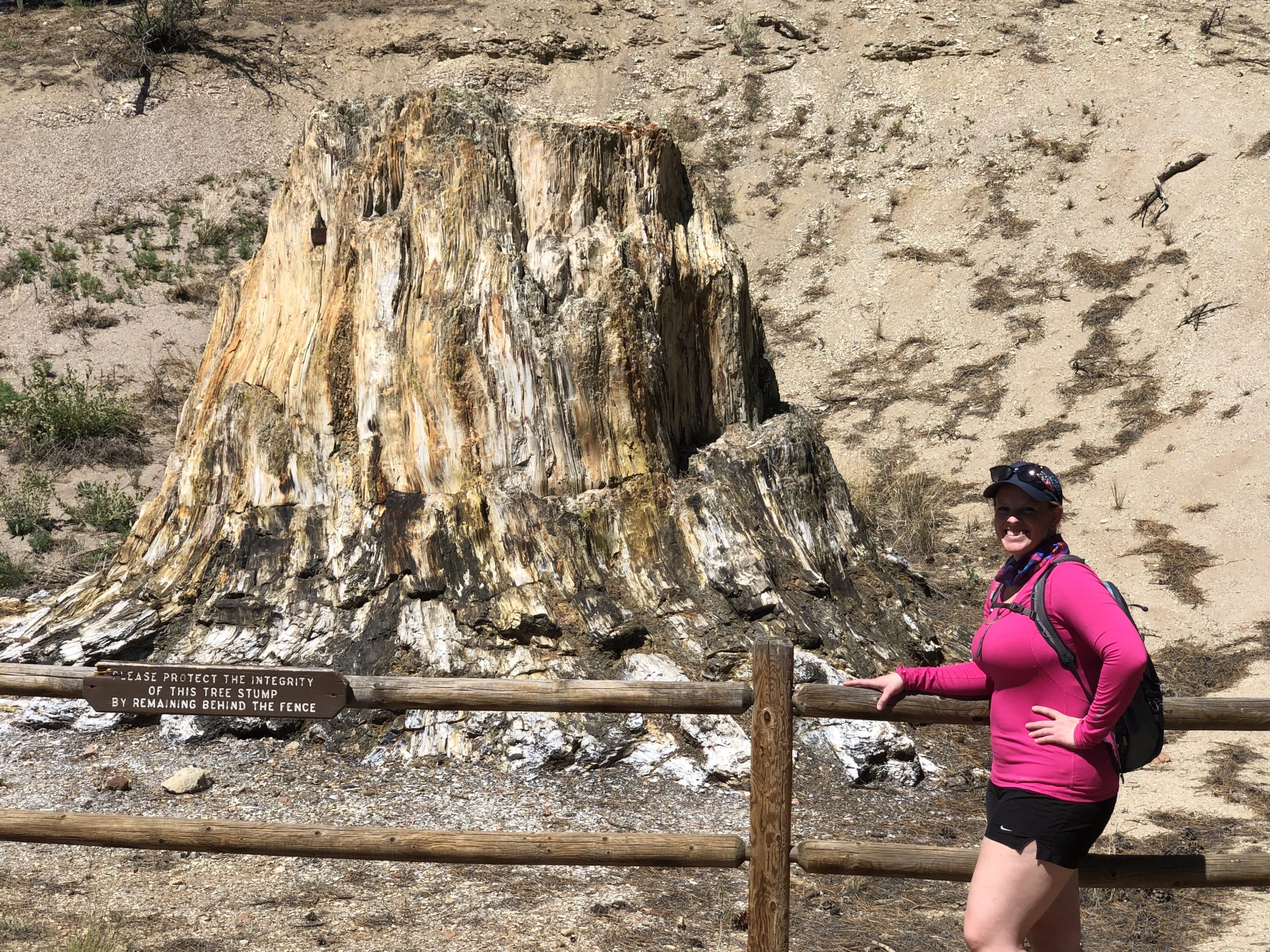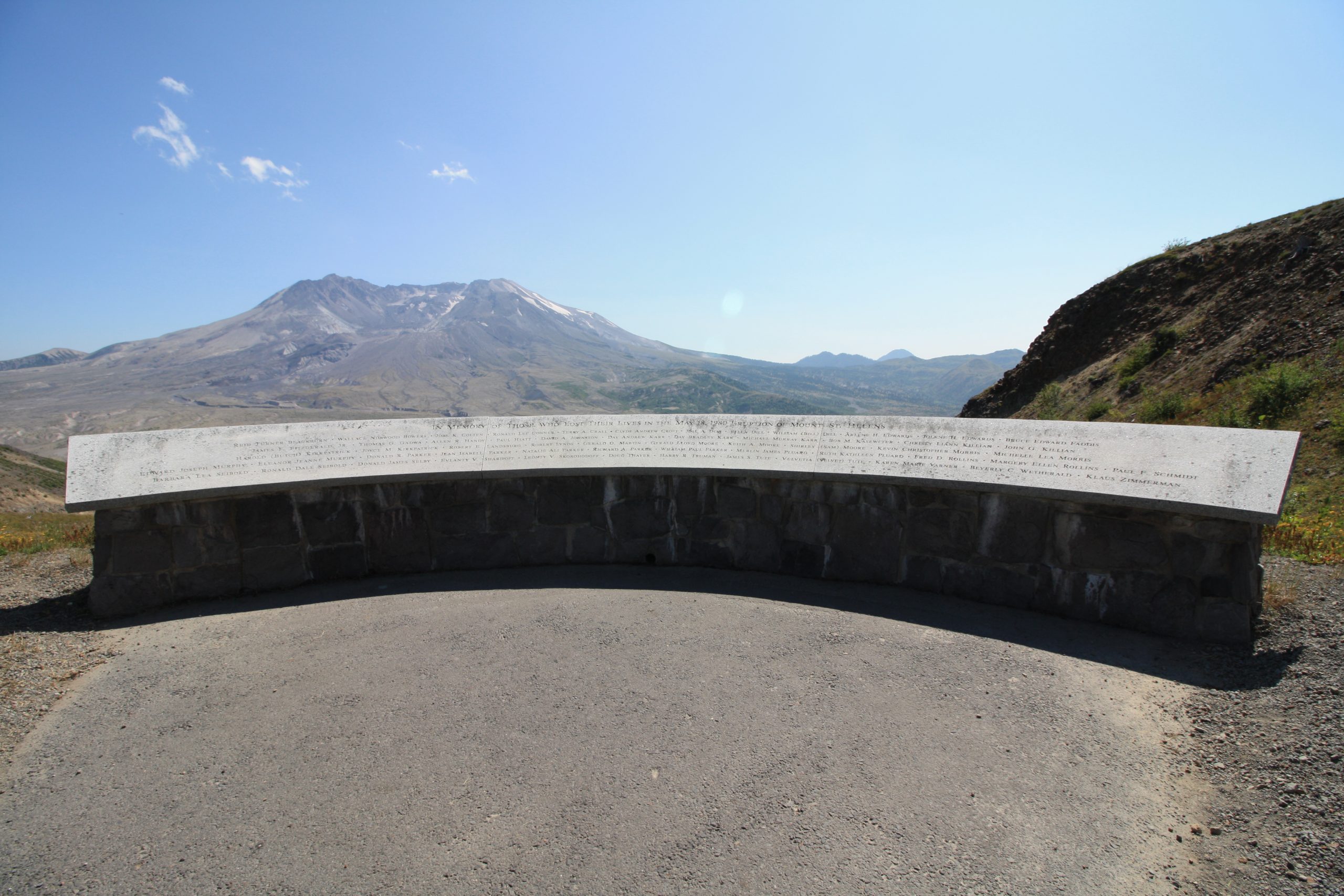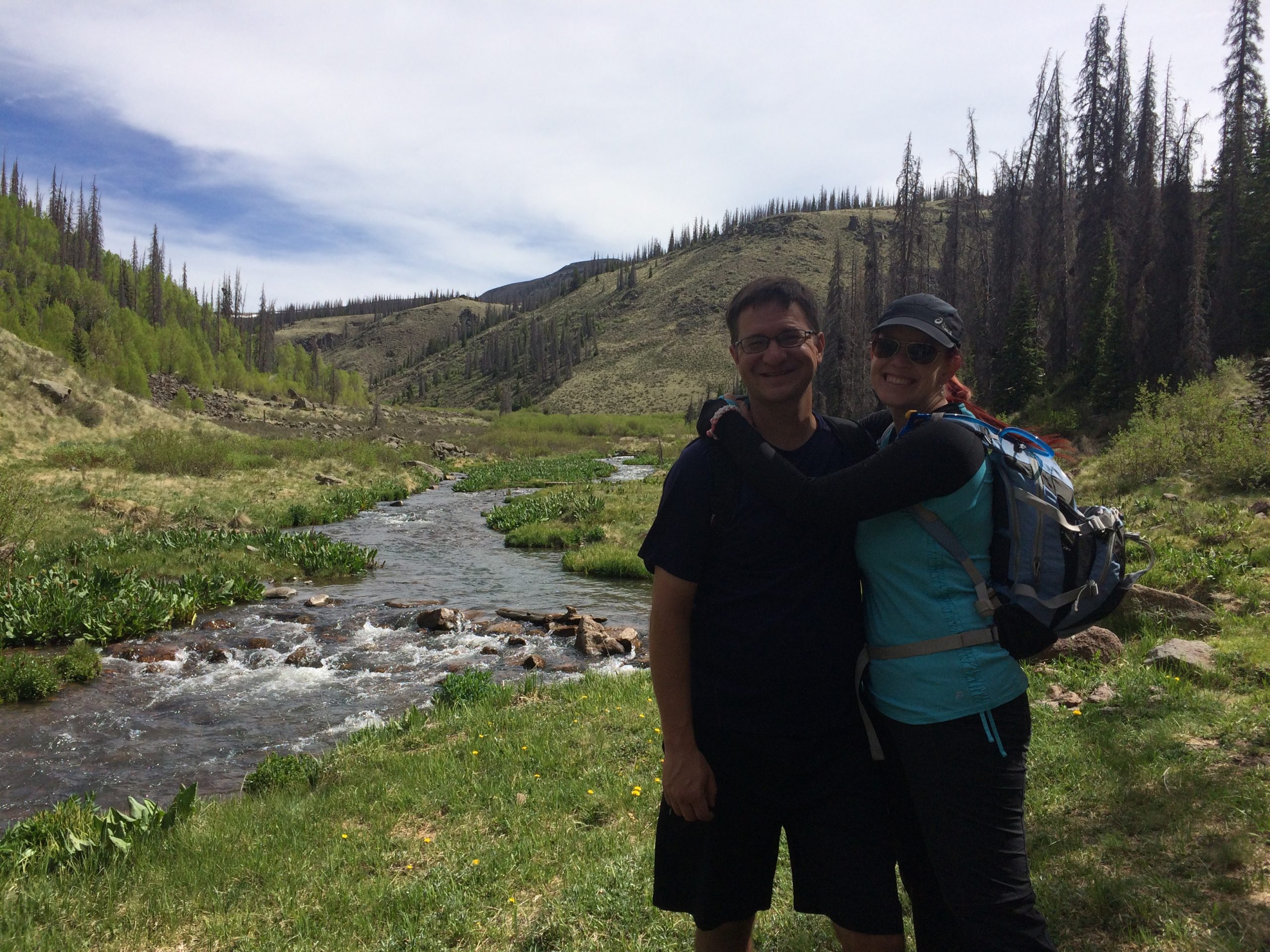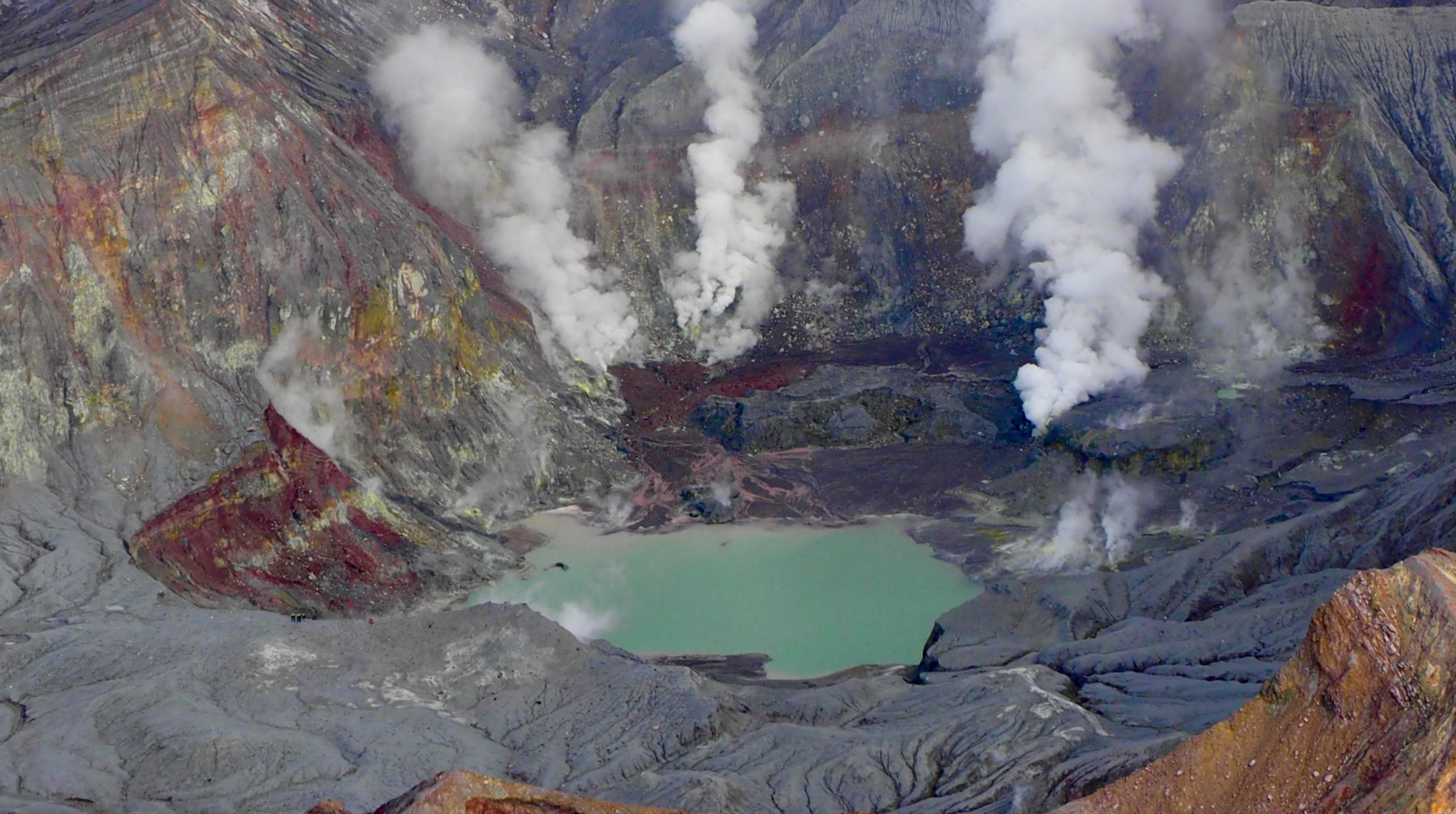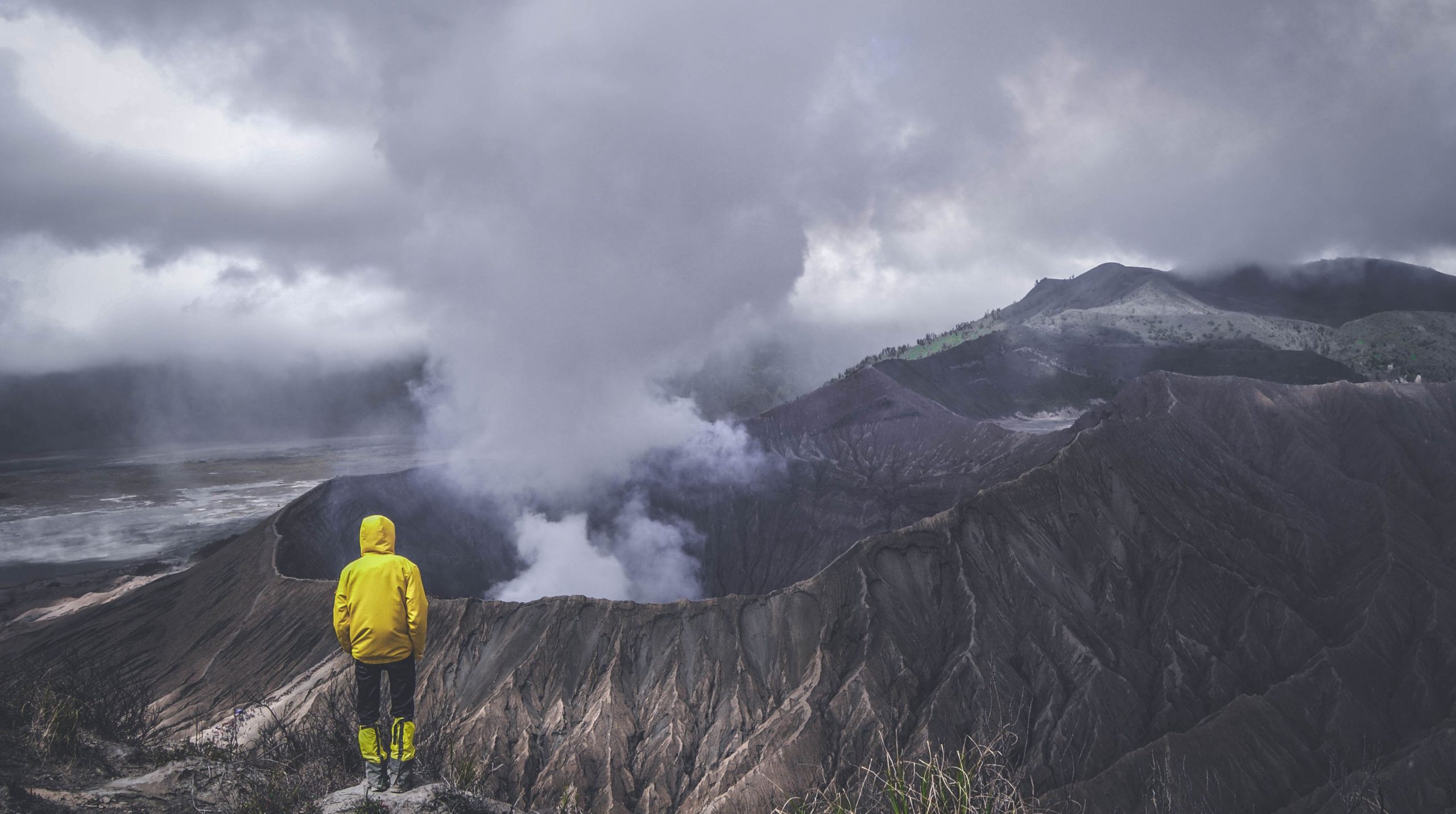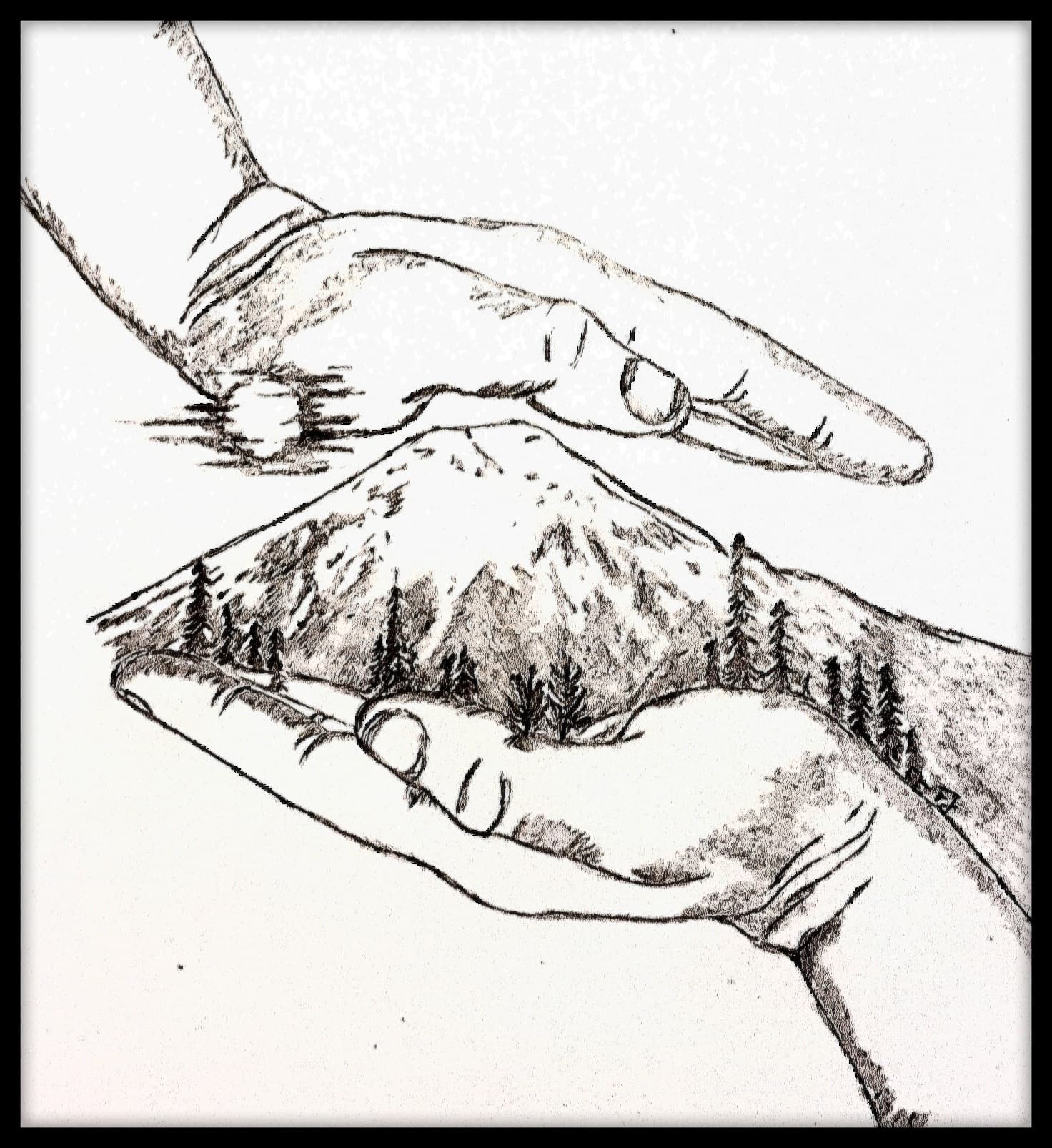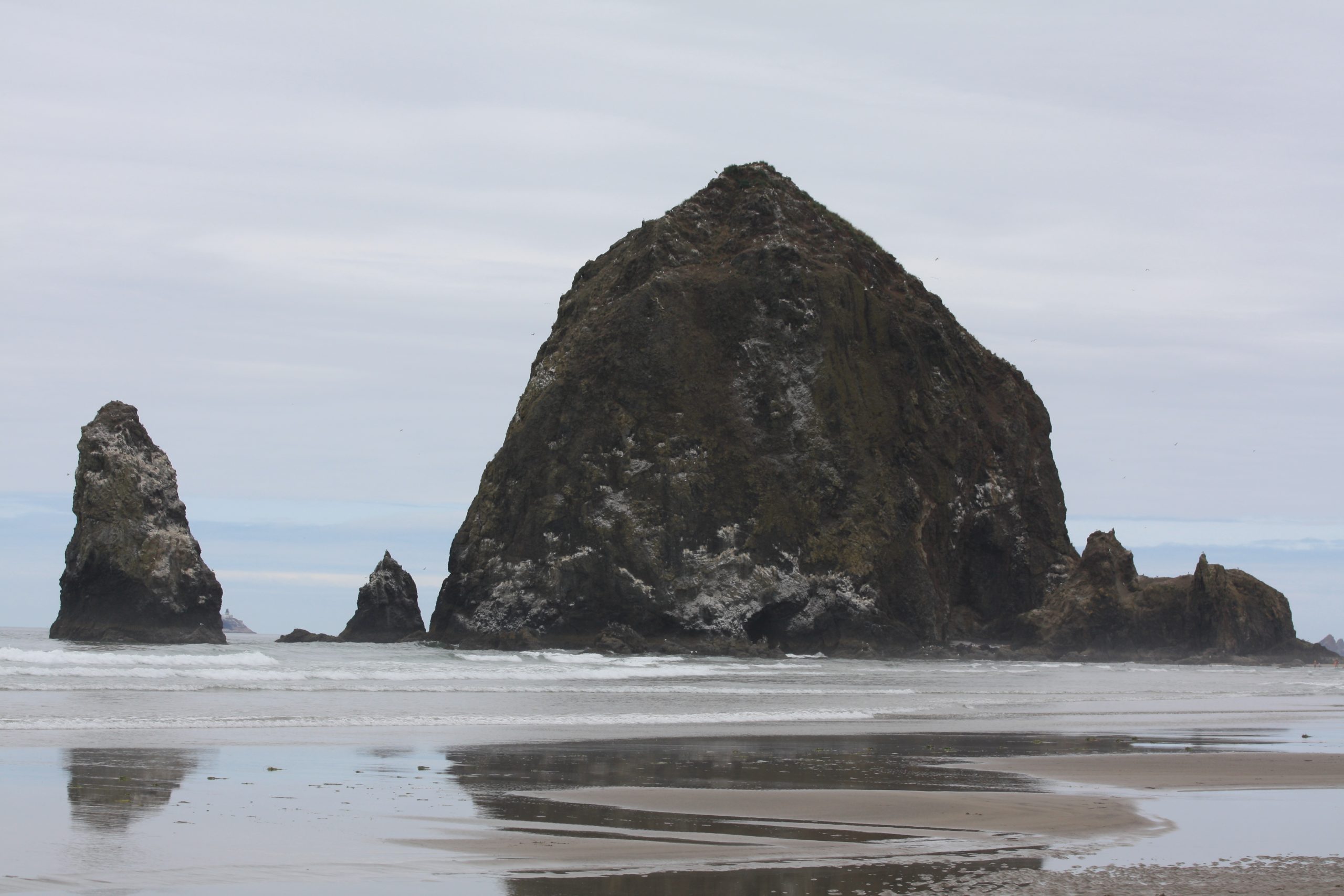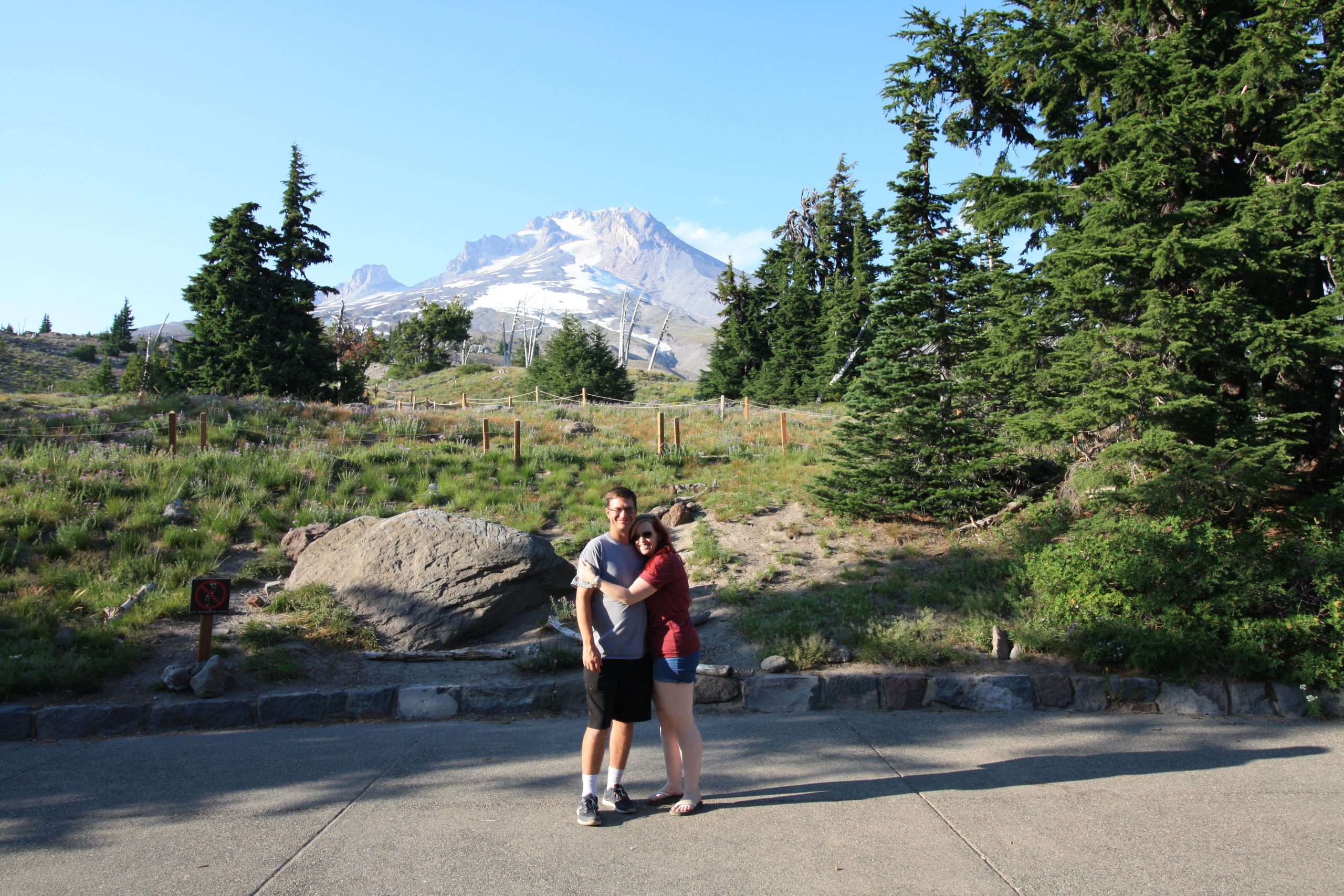Florissant Fossil Beds: A Window to the Past
A low mist hovered over the calm waters of Lake Florissant. The sun rose higher in the sky, bathing the world in gold light. Shorebirds crooned as they stretched their wings and splashed in the reeds. Fish bobbed to the lake’s surface, snatching water bugs off of the surface for breakfast. An opossum scurried through the underbrush. Redwood trees towered over two hundred feet into the air; their green leaves seemed to scrape the turquoise sky. Steam curled from the volcanic peaks that rimmed the valley. But the early morning calm would be shattered when the earth exploded with volcanic chaos. Thick ash blanketed Lake Florissant and raging lahars finished the job. This eruption—one of many in central Colorado—would create and preserve the monument we now know as Florissant Fossil Beds.
Looking Back at Mount St. Helens’ 1980 Eruption
Mount St. Helens is one of the most fiesty volcanoes on the planet. It is certainly one of the most active volcanoes in the United States. Situated in Washington’s Cascade Range, this stratovolcano is known for its explosive and frequent eruptions. Mount St. Helens has produced lava flows, towering lava domes, and erupted roiling ash clouds and pyroclastic density currents. Out of all of Mount St. Helens’ eruptions, one event in particular has branded itself into our memories: the eruption on May 18, 1980.
May 18, 1980
It was a quiet and sunny Sunday morning in Washington. Birds were singing in the thick forest and trout were splashing in the Toutle River. Elk roamed through the underbrush. And Mount St. Helens conical peak dominated the landscape.
Since March 1980, frequent earthquakes had rattled the volcano and surrounding landscape. Several small eruptions of gas and ash had occurred at the summit in recent weeks. More startling was the way Mount St. Helens had begun to deform. A tremendous bulge had formed under the north slope of the mountain in a matter of weeks.
Scientists and local government officials had never seen anything quiet like it. They understood that Mount St. Helens was active, but the last eruption had been in 1857. No one alive had witnessed the potential power behind the volcano. They frantically studied the mountain and try to predict what type of eruption the volcano would produce – and when.
Exploring Wheeler Geologic Area
Wheeler Geologic Area was created from the fallout of Earth’s largest explosive eruption. When La Garita Caldera exploded millennia ago, it deposited 1,200 cubic meters of volcanic material throughout the state of Colorado. The Fish Canyon Tuff, as it has come to be known, can most easily be seen here at Wheeler Geologic Area. Nestled deep in Colorado’s San Juan Mountains, the tuff here has been well preserved over the years due to the surrounding valley. Wind and water have weathered the tuff over time, sculpting a dramatic landscape of spires.
Not very many visitors brave the 14-mile service road or 16-mile hike through the volcanic landscape. We not only love to explore volcanoes, but we love to discover the side of them that many people don’t get to see. Five of us began our hike at dawn from Hanson’s Mill, through thick forest and over age-old lava flows. (Catch up on the first part of our adventure here.) With the first stretch of our journey under our belts, we set off to explore the tuff formations at Wheeler Geologic Area.
Dragon’s Eggs
The trail rose steeply as we entered the 640-acre geologic area. Eroded tuff and ash covered the trail. It making it as slippery as a sand dune in places. Forest and foliage had taken root in the ashy soil and pines towered high above our heads. A creek bubbled across the trail and we hopped it, heading deeper into the monument.
One “Tuff” Hike – The Trail to Wheeler Geologic Area
After discovering that the La Garita eruption – the largest explosive eruption in the history of the Earth – was essentially in my own backyard, I had to explore it. The caldera itself is massive, well over a thousand square miles. It would take me years to explore it all on foot. For now, I decided to focus in on one of the most obvious traces of the ancient eruption: Wheeler Geologic Area.
Wheeler Geologic Area is tucked away deep in the La Garita Wilderness in southwestern Colorado. When La Garita erupted, huge amounts of ash and pyroclasts fell out here. The heavy ash compressed together and became volcanic tuff. Now named the Fish Canyon Tuff, Wheeler has been well protected over the millennia by the deep valley where it fell. Erosion has carved away at the tuff deposit over the years, leaving spectacular formations of gray and white behind.
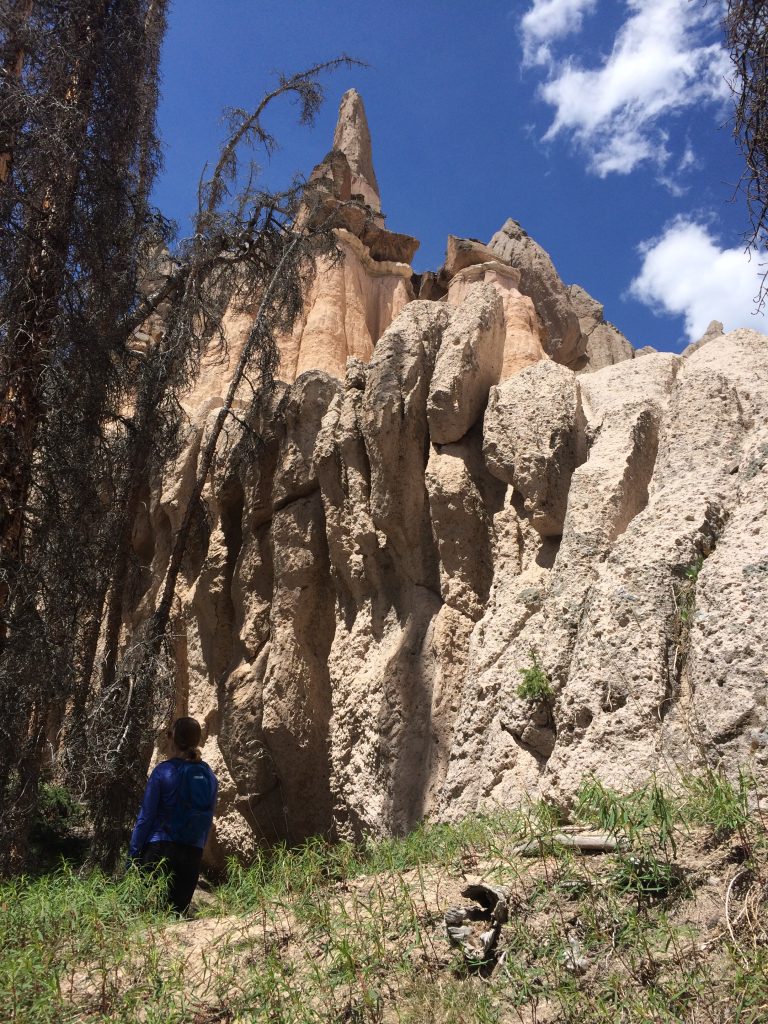
We had tried to plan our adventure to Wheeler Geologic Area for several years after I discovered the existence of La Garita. Monsoon rains and raging wildfires kept us from making the trek until, in 2017, we got our chance. The hike to and from Wheeler Geologic area is a long 8 miles; 16 round trip. But the views and volcanic formations that we saw along the way were absolutely worth it, even if it was one “tuff” hike.
La Garita: History’s Most Epic Eruption
As a kid, I wanted nothing more than to have a volcano or two within exploring distance. Given that I was 8 years old and couldn’t drive, that distance was about five miles. My friends and I used to make up stories that the nearby mountains were volcanoes and could erupt at any moment just to sate our sense of adventure. As far as we knew, the only volcanoes in the United States were Yellowstone, in Hawaii, or along the West Coast. The rest of the world’s volcanoes were in far off, exotic places like Japan or Iceland. Little did we know that real volcanoes were closer to home than we ever imagined – including the most explosive and epic eruption in Earth’s history: La Garita.
The San Juan Volcanic Field
La Garita Caldera sits in the middle of Colorado’s San Juan Volcanic Field. Located in the southwestern part of the state, the volcanic field was once extremely active. Two continental plates once collided here and caused the ground to fracture and faults to form. These faults allowed heated magma from the Earth’s mantle to rise and pool in massive magma chambers beneath the crust. The results were often explosive.
Wild Whakaari
It was a warm and beautiful December morning. The South Pacific’s waves reflected the vibrant blue sky and lapped steadily at the sides of the tour boats. The boats, operated by a handful of tour companies, skimmed across the Bay of Plenty on New Zealand’s north shore. 30 miles (48 km) offshore sat the steaming, rumbling stratovolcano known as Whakaari.
The tours to the volcano were on time, the boats fueled, snacks provided. People packed onto the boats for their expedition to the active volcano. The visitors’ shoes crunched against the gray ash and tephra as they hiked through the volcano’s water-filled crater. Steam curled up from steep crater walls streaked white and yellow from sulfur. Hot gas roared from fumaroles like a jet engine. As the tourists began to board their boats to head back to shore, they had no idea how many lives were about to be changed. Whakaari was about to show the world just how wild she really is.
Should Active Volcanoes Be Banned?
Every few years, there is a volcanic eruption that takes the lives of innocent bystanders. The loss of human life is heartbreaking. While most volcanoes show us warning signs before they erupt, it is impossible to predict the exact date and time that an eruption will occur. The results can be tragic. The loss of life has caused for some people to call for a ban on public access to all active volcanoes worldwide.
After the Whakaari (White Island) eruption claimed 21 lives in December 2019, the cry to ban active volcanoes from the public became louder than ever. Advocates for the ban claim that if no one can approach an active volcano, then the death toll will be zero. Is it possible to ban the public from all active volcanoes? Should active volcanoes be banned at all?
A Volcano’s Plea
Listen when I speak to you!
I wish to do you no harm.
Your bodies are small and fragile.
Pay attention when I sound the alarm.
I do not mind you exploring my slopes;
I even enjoy your laughs.
Humans are so fascinating
When they tread my lava paths.
A volcano must do as we are created for;
To follow our calling, you might say.
When the time comes for us to erupt,
You must stay far away.
Haystack Rock
The Pacific Ocean is absolutely magical. One never knows what they’ll discover on its shores or in its rich blue depths. There is something about the steady crash of the waves against the shore that relaxes and envigorates the soul. Our Base Camp is nowhere near the ocean, or any significant source of water, so we made tracks for the beach while we were in Oregon this summer. We didn’t choose just any beach, however. We chose Cannon Beach, Oregon for sentimental reasons and ended up finding a volcanic treasure: Haystack Rock.
Mount Hood
Wy’east has a secret. He loves the sunrise.
Before the sun even rose, I felt the stirring. I lifted my head from the soft pillow and looked out the window. Outside of our log cabin at the base of Mount Hood, the sky was turning purple behind the thick cluster of trees. Streaks of pink began to tint the clouds, then orange strands began to glow. But there was something else in the air that morning that I’d never quite felt before during a sunrise. It was like the quivering excitement you felt as a kid on Christmas morning. It grows and grows until you burst from your bed and race downstairs to see the presents under the tree.
I snuggled under the thick down comforter as I watched the sunrise. The excitement thickened in the air like static electricity. Jason was fast asleep next to me. And I hadn’t heard a peep from downstairs. Even the birds had barely begun to chirp. The only one up was the volcano.
